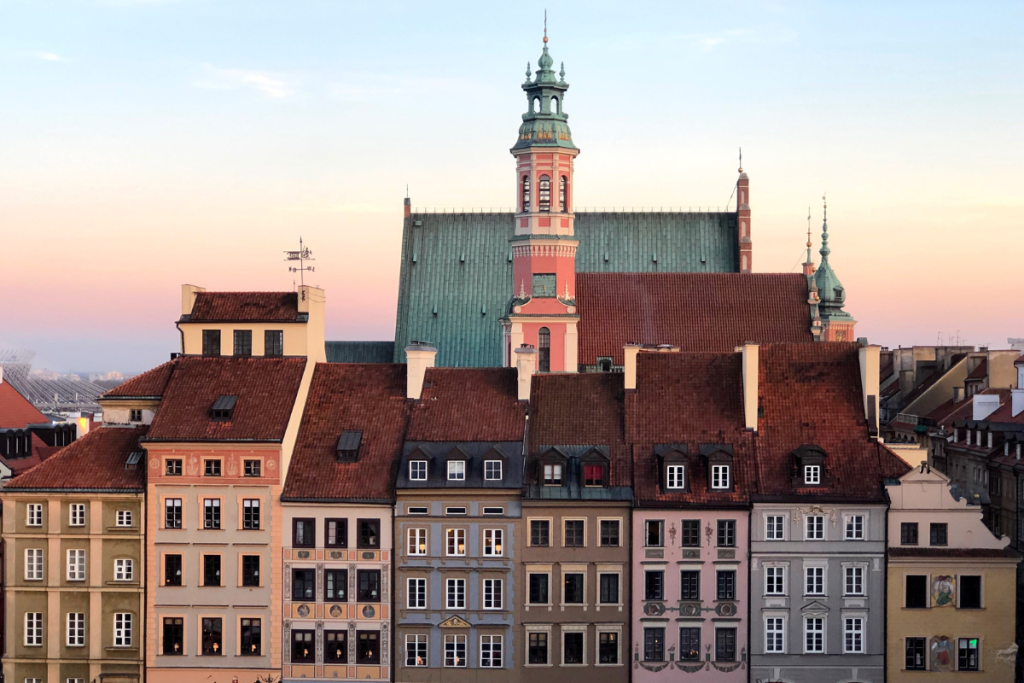Just like other advanced economies, Poland has been experiencing labor shortages because of an aging population and large numbers of Polish workers leaving the country for other EU economies. The massive inflow of Ukrainian refugees has boosted Poland’s labor supply and is contributing to its economy outperforming the rest of Europe.
Poland’s living standards are converging with Western Europe
Poland is currently one of the strongest economies in Eastern Europe and has benefitted a lot from joining the EU back in 2004 when ten Eastern European countries were admitted. The entire region has seen spectacular economic growth in recent years and Poland is set to overtake Southern Europe in terms of productivity and living standards soon.
Poland’s GDP per person employed – measured in inflation-adjusted terms and taking international price difference into account (Purchasing Power Parity) – is now higher than that of Portugal.
Moreover, as British newspapers have now reported on numerous occasions: Poland’s living standards are rapidly converging to that of the U.K., which also reduces the benefits that would come from migrating from Poland to the United Kingdom. And indeed, while the Polish population in the U.K. increased to almost one million since Poland became a member of the European Union, Brexit has caused a couple of hundred thousand Poles to leave the country recently.
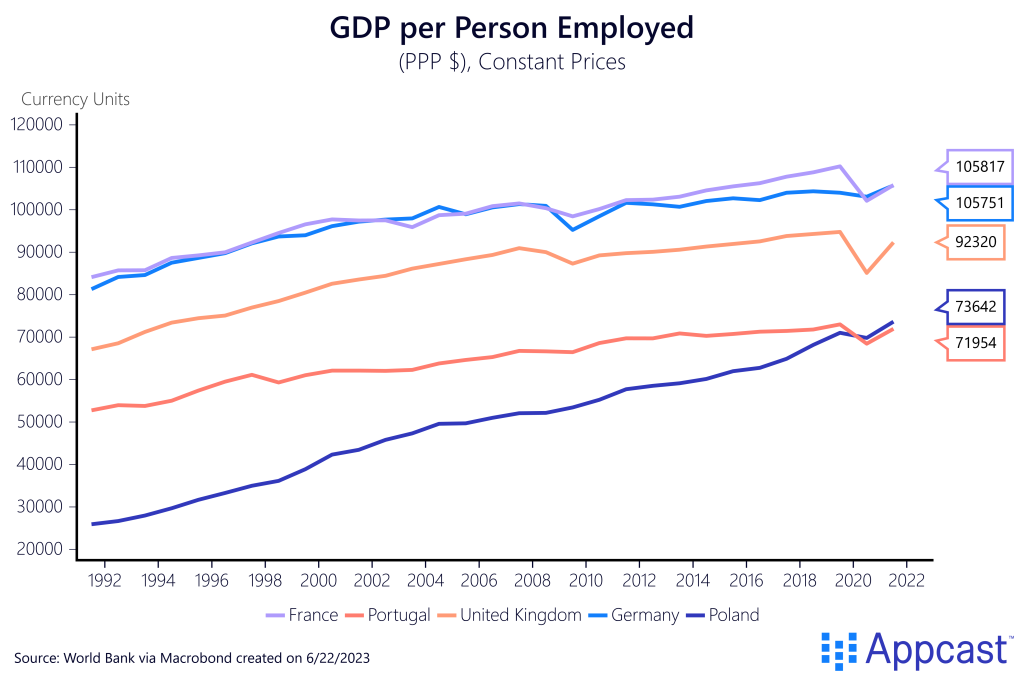
Adverse demographics and labor shortages have affected Poland since the 1990s
One big factor that has held back the overall growth rate of the Polish economy in recent years is adverse demographics, which have resulted in massive labor shortages. While productivity has increased a lot, Poland has seen an enormous outflow of workers in recent decades who left for the U.K. and Germany to earn higher wages.
Moreover, like other advanced economies, birth rates in Poland have plummeted, falling from more than three children per woman in the 1960s to under 1.5 in the 2000s. And they are projected to remain at this below-replacement level in the coming decades.
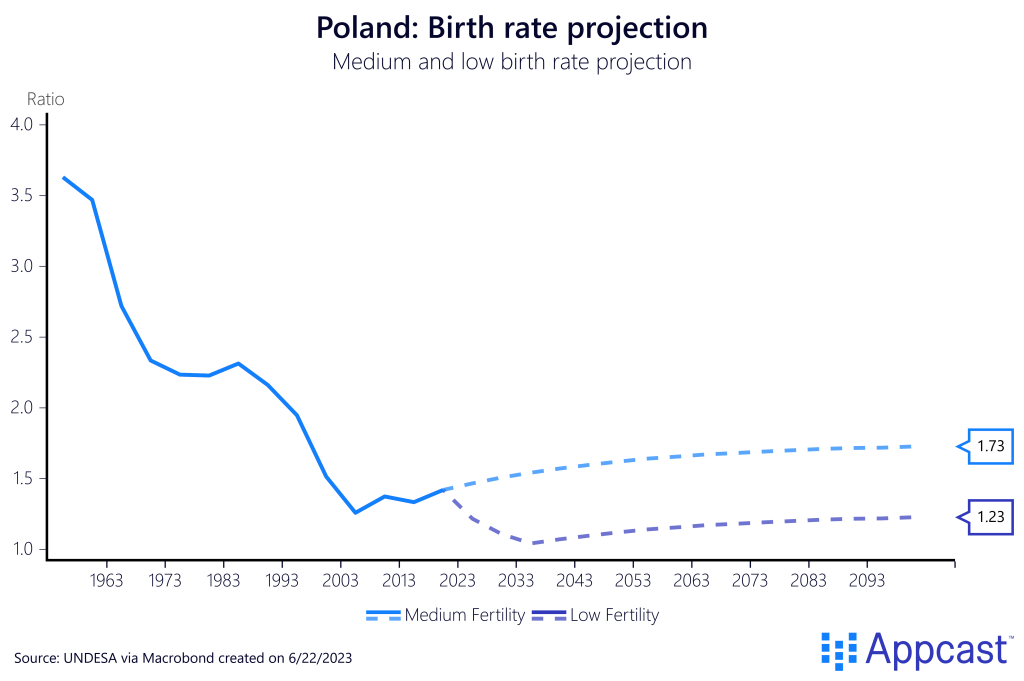
Adverse demographics have thus shaped the Polish economy and labor market. For many EU countries, workers have just begun to be cited as the limiting factor of production. The Polish economy has faced this problem since the early 2000s. Labor has been reported as the limiting factor of production in Poland’s service sector to a much greater extent than in any other European economy.
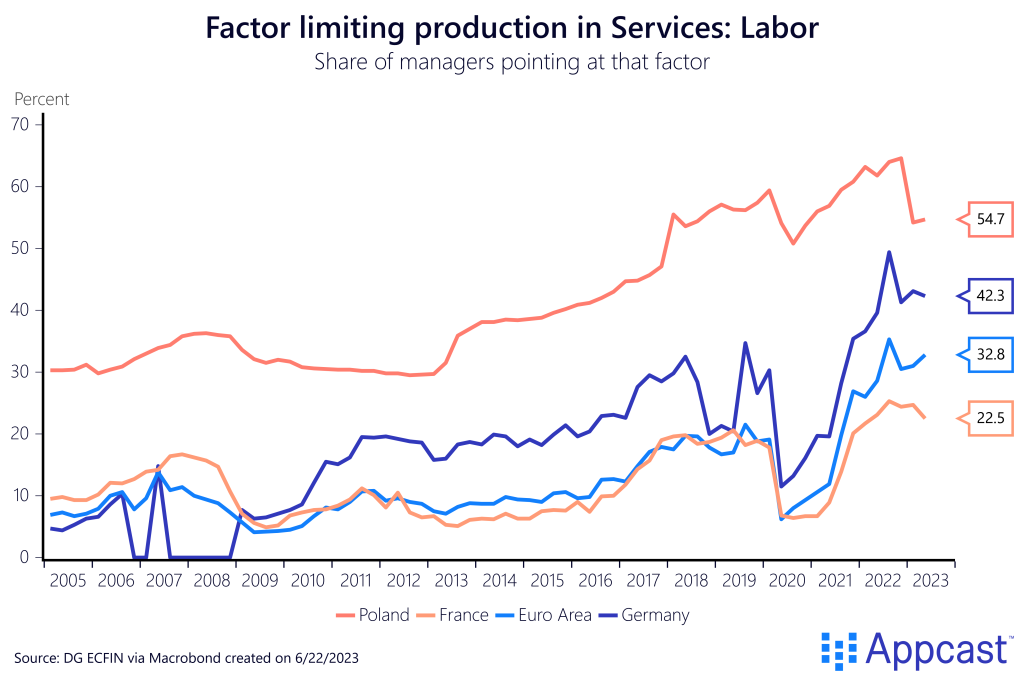
The same can be said for the industrial sector.
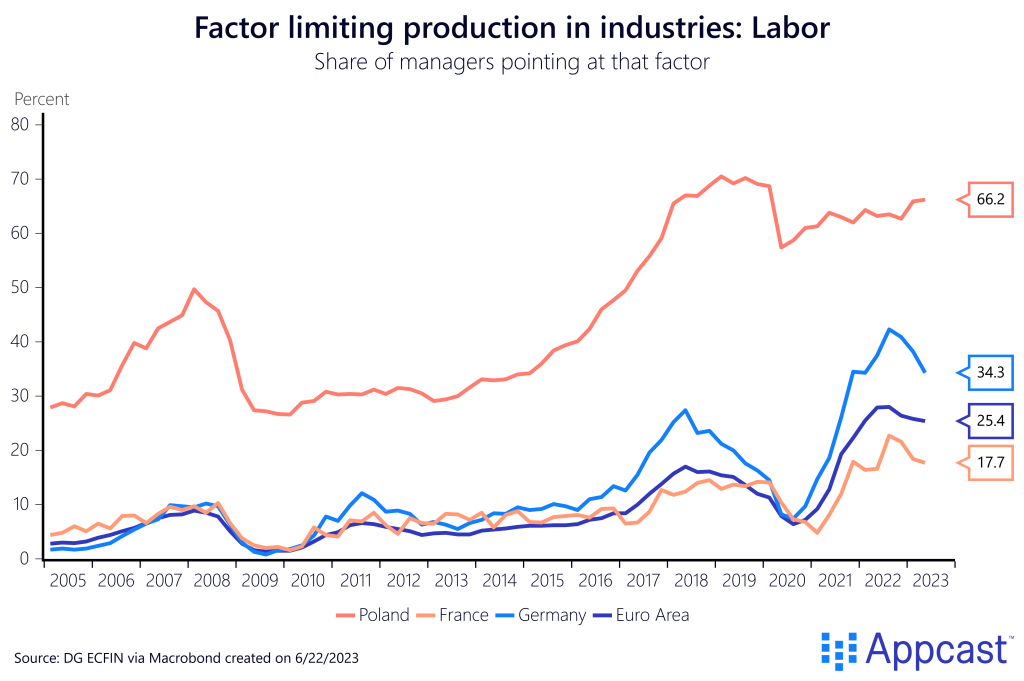
And it is also true for the construction sector.
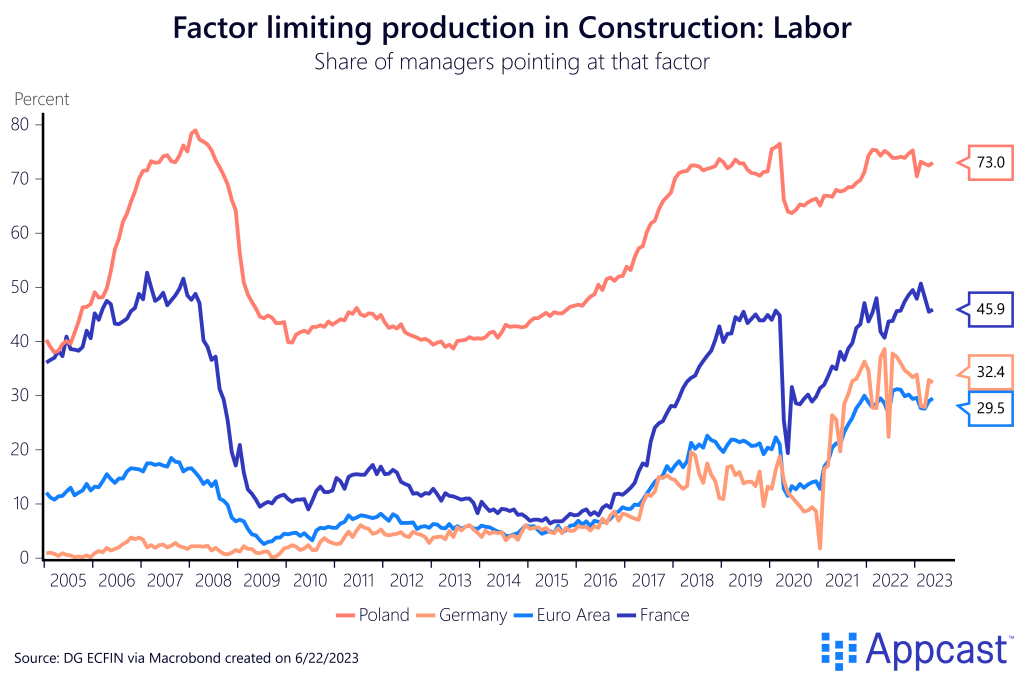
It is fair to say that Poland experienced a significant population outflow when the country became a member of the European Union. Millions of workers took advantage of higher wages in Germany and the U.K. Annual migration from Poland to Germany basically doubled from about 75,000 in 2000 to more than 150,000 in 2006. According to some estimates, about two million people in Germany are either Polish nationals or of Polish descent. Similarly, migration to the U.K. also rose significantly during the same period and close to a million Polish people lived in Great Britain until the Brexit referendum.
However, as economic convergence to Western European living standards progresses, economic migration from Poland to the rest of the EU will naturally decrease. And indeed, in recent years, an increasing number of Polish workers living abroad have returned to their home country. This is especially true for the U.K. where Brexit has been a big factor, with more than 200,000 Polish people having left the country in recent years.
Poland is now massively outperforming all of Europe thanks to more than a million Ukrainian refugees
The war in Ukraine has been a gamechanger for the Polish economy, which has seen a massive inflow of Ukrainian refugees. As described above, population outflows and low birth rates have led to a steady decline in Poland’s population since the late 1990s, from a peak of almost 39 million to under 38 million just a couple of years ago.
The entire decline has now been made up for by an inflow of about 1.3 million Ukrainian refugees into the country over the last one-and-a-half years. This massive migration boost means that the Polish population increased by more than 3%.
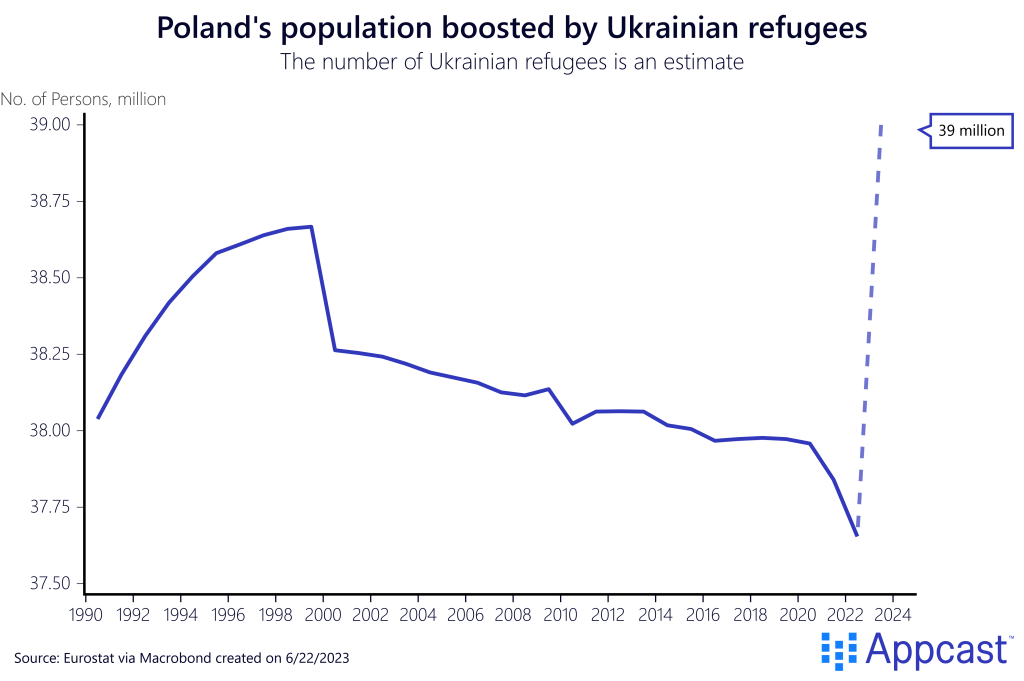
This inflow of people has supported the recent economic boom as it alleviates the worker shortage. Even if just an estimated 45% of the refugees are of working age, this is boosting the labor force by more than half a million.
Poland is now the top performing economy in all of Europe and its GDP is about 10% higher in real terms compared to Q4 2019 – the Euro area is up only 3%, and Germany and the U.K. are basically flat since then.
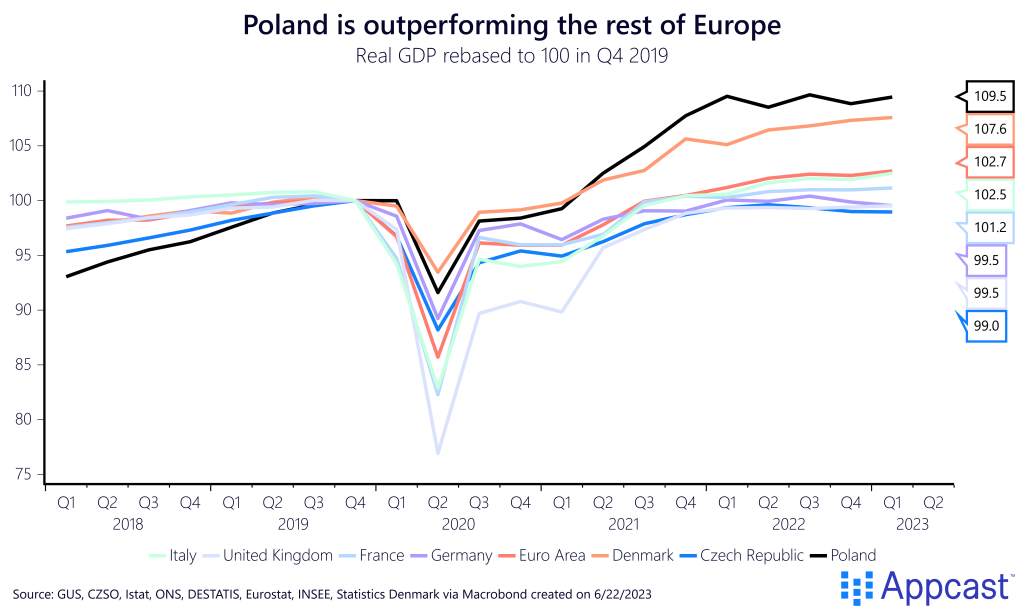
This shows the enormous power of migration and other advanced economies, like Germany, should take notice. The inflow of workers has benefitted Poland enormously.
Obviously, migration is not always seamless and has to be accompanied by a number of other economic policies that make it easy for foreign workers to get integrated into the economy and workforce without creating a political backlash like has happened in other countries.
The cultural proximity between Poland and Ukraine is an advantage. Ukrainian as a Slavic language is reasonably close to Polish, giving Ukrainian workers an edge because they can integrate more quickly into Polish society.
One big question is obviously how long the refugees are allowed to stay. The Polish government recently passed a new act that allows Ukrainian war refugees to legally stay in the country for 18 months. There is a pathway for further legalization as Ukrainians can apply for a temporary residency permit that would last for three years.
However, this also means that Poland could see a big decline in the Ukrainian population in about three years’ time – meaning a significant labor supply shock in the opposite direction – unless the Polish government grants those refugees permanent residency status.
Conclusion
Poland has been suffering from labor shortages for decades as outward migration and rapid declines in the birth rate led to a shrinking population since the end of the 1990s. The massive inflow of Ukrainian refugees has now boosted the Polish population by more than 3% and completely offset the past decline. Even if only temporary, the influx has also created an economic growth miracle and Poland is the best-performing large economy in Europe. This shows to what extent advanced economies could benefit from looser migration policies – and their ability to offset the adverse effects from rapidly aging societies.






